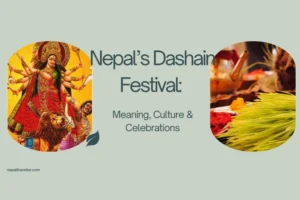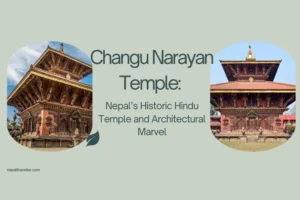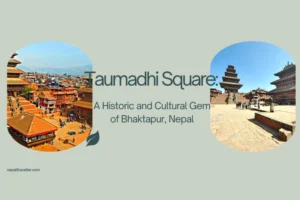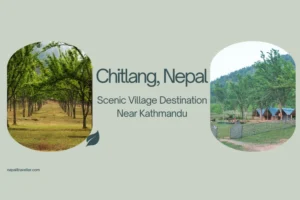The country of Himalayas, Nepal, has found a place in the bucket lists of many travelers, trekkers, spiritual pilgrims, and culture vultures for quite some time now. The allure of untouched mountain scenery, old temples, festivals splashed in colors, and welcoming people makes it the destination to be visited by all travelers in the future. But as would be the case in any other place, due to recent political unrest and climatic conditions, security would be on top of a traveler’s mind who wants to travel there in 2025 and later.
This guidebook addresses Nepal’s current safety situation, evaluates the risks, and provides useful guidelines to have a safe and enjoyable traveling experience. It also outlines reasons why Nepal is among the safest and friendliest tourist destinations in Asia.
Table of Contents
ToggleCurrent Safety Situation of Nepal in 2025
Political Stability and Tourist Safety
Nepal had some political protests in 2025, which temporarily disrupted normal life in some areas. They were, however, local, calm protests against government policies and not foreigners or tourists. The Government of Nepal has also imposed strict measures to inform the world that Nepal is completely safe for tourism. Tourist spots such as Kathmandu, Pokhara, Chitwan, and most trekking routes have been assured by the government to be in operation as normal with no interruption.
Nepal Tourism Board also launched an exclusive free visa extension facility for tourists in consideration of visa expiration amid the protest, indicating their concern towards tourists. Locals have also shown that tourists are greeted warmly and hospitality-wise and that there is no anti-tourist sentiment amidst political unrest.
Low Crime Rates and General Security
Nepal has a good image of having fewer crimes against visitors, especially against violence. Pickpocketing or bag snatching at tourist spots or business centers may be experienced but not regularly and could be avoided by utilizing normal safety precautions while traveling.
Security is enhanced in tourist areas, and the residents, tourist operators, and police work together to ensure tourists are well looked after and safe. There are tourist police at major centers who can be called upon by travelers.
Natural Hazards and Preparedness
Earthquake Preparedness
Nepal lies in a seismically active region, and the 2015 earthquake is a recent recollection for all. Although tremendous progress has been made regarding the rebuilding and rehabilitation of structures, there is always an element of risk. Travelers must remain aware of safety procedures, are aware of the evacuation plans, and carry essential emergency gear if one wishes to trek or travel to rural Nepal.
Weather and Terrain Hazards
Mountain weather is unpredictable and can suddenly shift on storms, landslides, or avalanches. Some trekking routes are more risky during the monsoons because terrain is unstable. Guided treks, avoiding red-marked danger zones, and avoiding local advice are necessary. Choosing the right gear and travel insurance with a rescue option is strongly recommended.
Trekking Safety and Adventure Travel
Trekking is the prime reason to travel to Nepal, but there’s no safety first and foremost. Safety is ensured by:
- Hire Experienced Guides: Especially for long trails or novice trekkers. Guides assist in route navigation, handle altitude sickness, and provide additional emergency preparedness.
- Watch Out for Altitude Sickness: Be aware of early symptoms (headache, nausea, dizziness) and acclimatize in return. Carry easy medications such as Diamox.
- Beware of Animal Hazards: Yaks and other animals will charge spontaneously along trails; caution is extreme.
- Travel Insurance: Highly recommended and typically covers helicopter evacuation in case of an emergency, especially above 7000 meters.
Safety of Health and Hygiene
Due care should be taken by travelers with medical hazards such as cholera, pneumonia, diarrhea, and food poisoning. Recommends:
- Pure bottle or filtered water only should be consumed.
- Freshly cooked and clean food from clean eateries should be consumed.
- Masks have to be used while staying in filthy city centers to fight against air problems.
- Hospital or travel insurance company registration needs to be made in advance in case of the necessity of receiving medical treatment.
- Nepal provides affordable health care with quality medical facilities at major townships such as Kathmandu and Pokhara, where there is virtually no language issue.
Crime Awareness and Scams
There is little serious crime, although some scam and nuisance:
- Drinks Scam: Mind pubs; do not accept a drink from strangers to avoid overcharging.
- Charity Scam: Be cautious when donating to strangers who claim to work for non-profits. Do your research!
- Trekking Guide Scam: Some trekking guides may exaggerate extreme altitude sickness simply to increase the fee you must pay, therefore, be sure to hire a guide with experience and honesty.
- Tika Scam: There are some holy men who will raise their prices for a blessing, avoid this unless you negotiate first.
In summary, avoid shipping valuables, dress conservatively, and conduct conservative behavior in public as best you can; this will reduce any form of petty crime towards you.
Safety for Women and LGBTQ Guests
In general, it is extremely safe for female tourists, including those traveling alone. The hospitality of the Nepali culture displays a positive disposition toward women and, generally speaking, all tourists should take basic precautions, like not going to isolated places when it’s dark outside, and not dressing offensively; especially in rural or religious communities.
LGBTQ tourists are considered to be living in a safe, progressive, and non-hostile nation. There are LGBTQ travelers who have witnessed pride parades, nor is there any legal discrimination against LGBTQ individuals; however, it is stereotypical for all gay and straight couples to not be affectionate with each other, even under the expectation of culture.
Transportation and Road Conditions
Road conditions in Nepal, although generally acceptable, are comparatively poor:
- Road Conditions: many roads are either hazardous or too narrow; drivers’ levels of attention are inconsistent to regularity.
- Public transport: transportation can be affordable on tempos or buses, but safety is a concern, particularly with respect to driving competency.
- Flights: Dangerously risky mountain flights cannot compare safety-wise to international flights on carriers like Qatar Airways and Etihad versus local airlines.
- Motorbikes: Require an international driver’s license; wear protection gear; think logically.
The visitor should arrange for good transport, and do not take rural roads during the night hours.
Cultural Etiquette for Taking the Respectful and Safe Approach
Respectful local etiquette will be an important aspect with respect to safety and the enjoyment of the tourist experience:
- Dress well; no shorts or revealing clothes.
- Take shoes off before entering homes and temples.
- Don’t show affection in public.
- Show respect concerning culture and religious tradition.
- Don’t engage in illegal activities, such as drugs or prostitution, ICE being officially punished very harshly.
- Don’t use a child trafficking scam; give responsibly.
Emergency Contact Number and/or Support Services
In case of any emergencies the visitor can have recourse to:
- Police emergency number: 100
- Tourist police (Bhirkuti Mandap, Kathmandu: +977-1-4226359
- Ambulances: All major hospitals have emergency ambulatory services in Kathmandu.
- Missing child hotline
- A local SIM card and pre-programmed emergency numbers.
Why Visit Nepal Despite Dangers?
Nepal provides a mix of religion, nature, adventure, and culture which other places cannot provide. With the efforts of the government still ongoing, the local commitment and better infrastructure, security for the visitors is their prime concern.
Low crime rate of the country, hospitable locals, secure trekking routes, and presence of health care centers make Nepal an ideal holiday destination for family travelers, solo travelers, adventure enthusiasts, and culture fans.
Being sensitive, respectful, and responsible, tourists enjoy a special secure experience.
Simple Common Sense Tips for a Secure Journey to Nepal
- Stay informed: Follow news in the dailies and travel notices while on and prior to visiting.
- Use licensed guides and agencies: That minimizes risk.
- Purchase travel insurance: Particularly one for medical treatment and evacuation.
- Lock up valuables: Hotel safe, lockers, and don’t leave valuables within reach.
- Respect the local culture: Dress conservatively and be courteous in attitude.
- Avoid public areas: Particularly markets, buses, and tourist spots.
- Register with your embassy: Helps in case of emergency.
Conclusion: Nepal Is Still a Safe and Friendly Destination
Nepal is not only a country of such stunning beauty and great culture but also a country giving extreme priority to tourist safety, as well. Apart from any unforeseen political unrest or act of nature, Nepal is geared up for tourists and still an open welcoming sanctuary to be explored.
Foreigners may travel safely in Nepal with caution, common sense, and the help of locals.
Whether ascending the Annapurna circuit, visiting ancient temples, or strolling colorful Kathmandu streets, visitors in 2025 can rest assured that Nepal is a safe and friendly nation to visit.
Frequently Asked Questions (FAQs)
Q1: Is Nepal safe for international visitors to visit in 2025 despite recent political protests?
Yes, Nepal is still safe to travel to in 2025. Although there were isolated political demonstrations, they were peaceful in nature and were not against foreigners. All of the major tourist areas such as Kathmandu, Pokhara, Chitwan, and all of the major trekking routes are open in full with full security. Foreigners are greeted with a smile and are encouraged to take notice of what is going on locally and avoid the areas of protest.
Q2: What are the health precautions to be taken when traveling to Nepal?
The tourists need to consume filtered water or bottled water, well-prepared and quality food, and a face mask if there is air pollution, especially in cities. The tourists have to utilize travel insurance, i.e., the expense of medical emergencies and evacuation. The hospital facilities in big cities are satisfactory, and measures against common diseases like diarrhoea and food poisoning are necessary.
Q3: What measures of protection should trekkers adopt to stay safe in Nepal’s mountains?
Safety during trekking is having qualified local guides, trekking in the support of well-established trekking agencies, obtaining necessary permits (TIMS card and national park fee), acclimatization to avoid altitude sickness, and having travel insurance that covers helicopter evacuation. Trekkers are required to trek on marked trails, be cautious about weather conditions, and never venture out alone to reduce landslide, avalanche, and sudden change of weather-related hazards.





